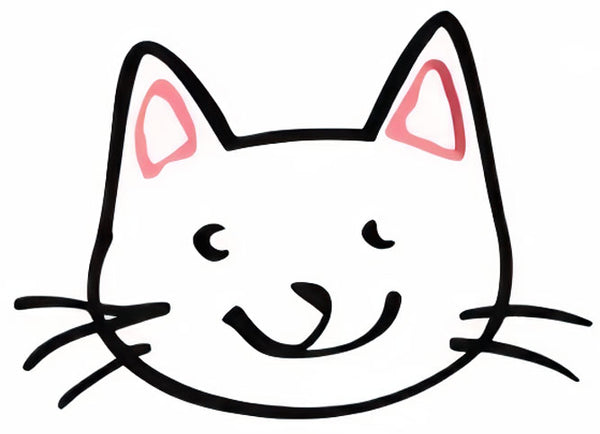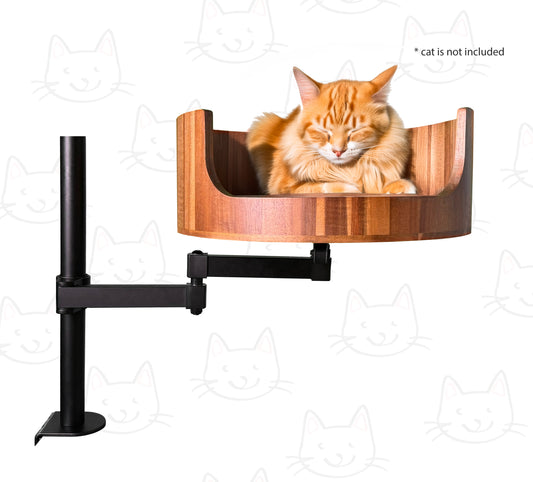
What Does It Mean When My Cat's Tail Wags?
Share
Curious cat owners may often wonder what their feline friends are trying to communicate through their body language, particularly when it comes to the tell-tale sign of tail wagging. Cats are known for their mysterious and often unpredictable behaviors, making it challenging for pet owners to decipher the meaning behind their actions. In this article, we will explore the various reasons why cats wag their tails, shedding light on the possible emotions and intentions behind this common feline behavior.
From playful flicks to aggressive swishes, a cat's tail can convey a wide range of emotions and messages. Understanding the subtle nuances of tail wagging can help cat owners better communicate with their pets and strengthen their bond. Whether your cat is expressing excitement, fear, or even aggression, learning to interpret their tail movements can provide valuable insight into their state of mind. In the following sections, we will delve into the complexities of cat body language and offer tips on how to recognize and respond to different tail wagging behaviors.
1. A cat's tail wagging can indicate different emotions, such as excitement, fear, or aggression.
2. The speed and position of the tail can offer clues about your cat's mood and intentions.
3. Pay attention to your cat's body language as a whole to better understand what their tail wagging might be trying to convey.
4. Tail wagging can also serve as a form of communication between cats and between cats and humans.
5. Understanding your cat's tail language can help improve your bond and communication with your feline friend.
Understanding Cat Tail Language
Cats use their tails as a form of communication, so it's essential to pay attention to what their tail movements may be telling you. A cat's tail wagging can have different meanings depending on the speed, direction, and intensity of the movements. For example, a slow and gentle wag may indicate curiosity or contentment, while a fast and vigorous wag could signify agitation or excitement. It's crucial to observe your cat's body language as a whole to interpret the message accurately.
Positive Tail Wags
In some cases, a cat's tail wagging can signal positive emotions. A slow wag with a slight curl at the tip may indicate that your cat is feeling friendly and relaxed. This type of tail movement is often seen when a cat is approaching a familiar person or another animal they are comfortable with. Additionally, a gentle flick of the tail while being petted could signify pleasure and contentment. It's always heartwarming to see your cat expressing happiness through their tail movements.
Negative Tail Wags
On the other hand, certain tail wagging patterns can suggest negative emotions or discomfort. A rapidly twitching or thrashing tail may indicate that your cat is feeling stressed, anxious, or frustrated. In some cases, a cat may wag their tail aggressively before displaying aggressive behavior, such as hissing or swatting. It's crucial to pay attention to these warning signs and create a calm and safe environment for your cat to reduce their stress levels.
Medical Considerations
In some instances, abnormal tail movements could be a sign of underlying medical issues that require veterinary attention. For example, a cat's tail may start twitching involuntarily due to nerve damage or neurological problems. In cases where a cat holds their tail in an abnormal position or exhibits pain when their tail is touched, it could indicate an injury or a medical condition affecting the tail. If you notice any concerning changes in your cat's tail movements, it's essential to consult a veterinarian for a thorough examination and proper diagnosis.
Frequently Asked Questions
Why does my cat wag its tail?
Cats wag their tails as a form of communication. Depending on the speed and position of the wagging, it can signal different emotions or intentions. A slow, relaxed tail wag typically indicates that your cat is feeling content or curious. A fast, erratic tail wag could signify agitation, excitement, or aggression.
Should I be concerned if my cat's tail is wagging?
If your cat's tail is wagging slowly and in a relaxed manner, there is usually no cause for concern. However, if your cat's tail is wagging rapidly or aggressively, it may indicate that your cat is feeling stressed, frightened, or threatened. In these cases, it's best to give your cat some space and observe their behavior to determine the cause of the agitation.
Can I use the Desk Cat Nest to help my cat feel more comfortable when its tail is wagging?
Yes, the Desk Cat Nest can provide a safe and comfortable space for your cat to retreat to when they are feeling stressed or anxious. By providing your cat with a cozy and secure place to relax, you can help them feel more at ease and reduce the likelihood of their tail wagging in an agitated manner.
In conclusion, understanding why your cat's tail wags is essential in deciphering their moods and behaviors. The Desk Cat Bed is a valuable choice for cat owners as it provides a comfortable and secure space for your feline friend to rest and relax. By offering a cozy spot for your cat to unwind, the Desk Cat Bed can help reduce stress and anxiety, which may ultimately lead to less frequent tail wagging as a sign of agitation. With its durable construction and plush cushioning, this cat bed offers numerous benefits for both you and your beloved pet. Invest in a Desk Cat Bed today to improve your cat's overall well-being and foster a stronger bond with your furry companion.



















































